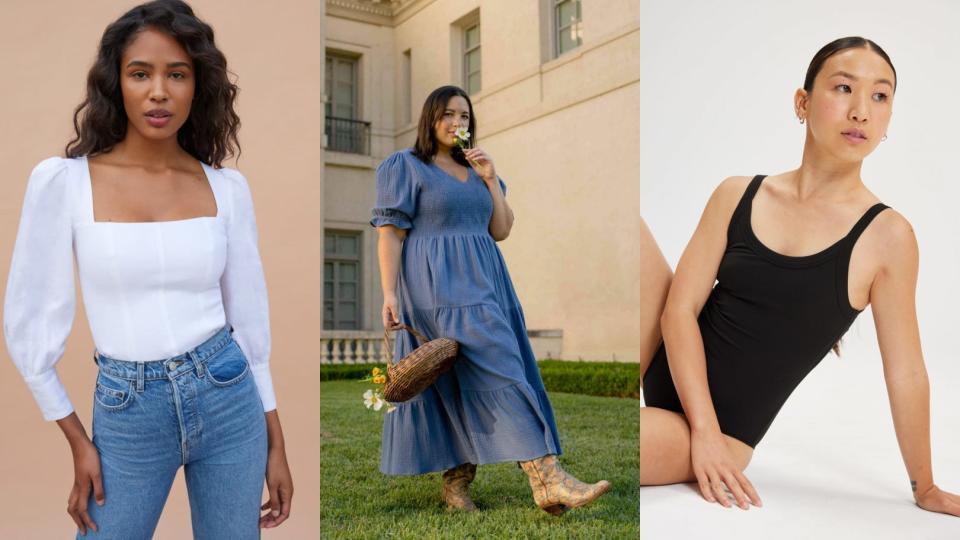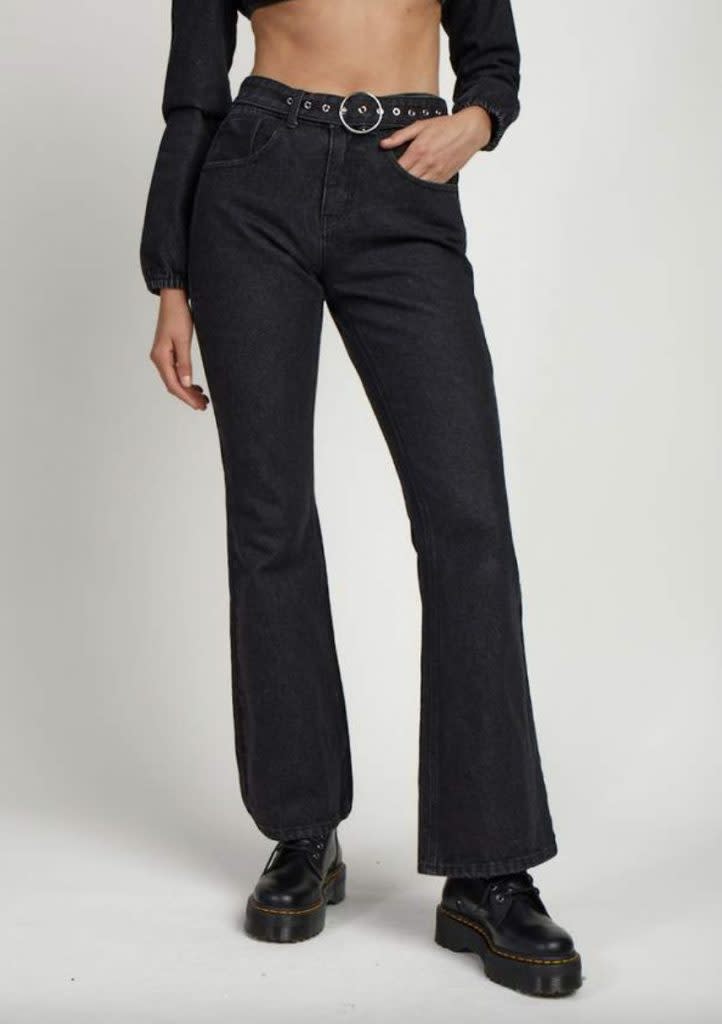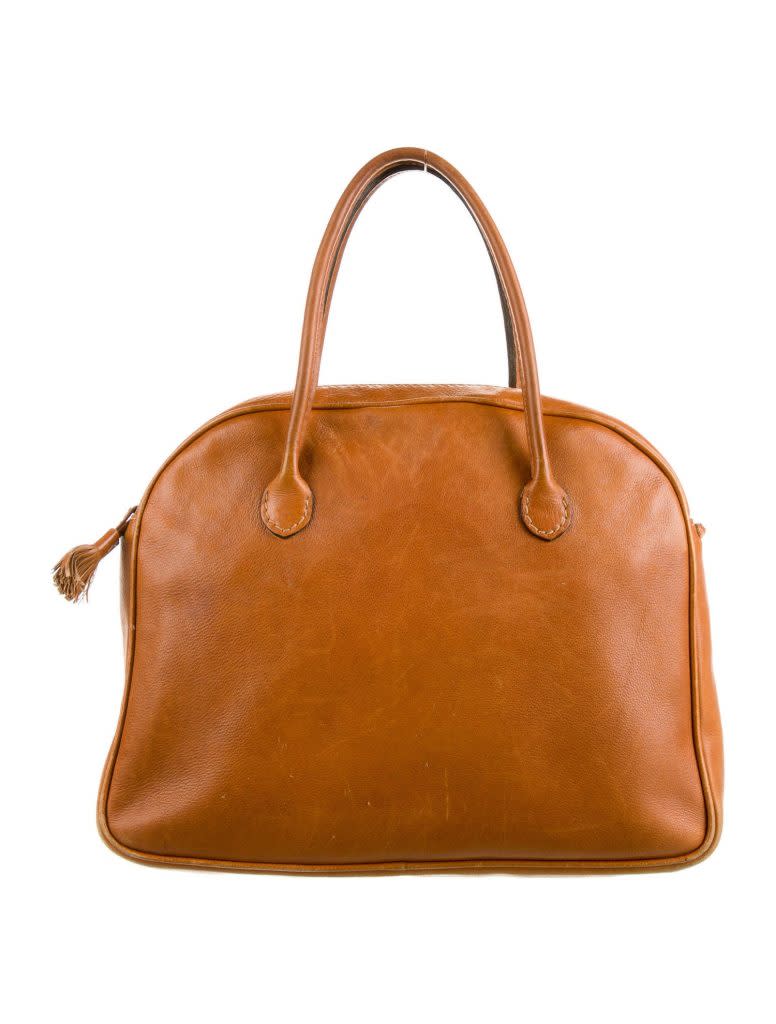We may earn commission from links on this page, but we only recommend products we believe in. Pricing and availability are subject to change.
4 (actually easy!) tips for shopping more sustainably

Our team is dedicated to finding and telling you more about the products and deals we love. If you love them too and decide to purchase through the links below, we may receive a commission. Pricing and availability are subject to change.
Sophie Ross is an In The Know shopping contributor. Follow her on Instagram and Twitter for more.
“Sustainable shopping” is a nebulous, vague term. Any type of clothing is, in its essence, unsustainable, given the fact that 85% of clothing in the US ends up in landfills or incinerators at the end of its life cycle. But since the fashion industry isn’t going anywhere (and employs millions upon millions of people, to its credit), all we can do as shoppers is try to support clothing manufacturers that are at least trying to be ethical.
And while many companies make promises about their ethics and eco-friendliness, it’s important to realize that many of them are simply “greenwashing” — aka “when a company or organization spends more time on marketing themselves as environmentally friendly than on minimizing their environmental impact.” This is according to Business News Daily, which also calls greenwashing “a deceitful advertising gimmick intended to mislead customers who prefer to buy goods and services from environmentally conscious brands.”
Basically, many of the brands you see touting sustainability initiatives are typically all talk, no action.
But while some companies may be faking it, others are actually putting their money where their mouth is. And the good news for those brands is that consumers are paying more attention than ever to conscious companies. According to Forbes, ”Consumers under 30 (those belonging to Gen Z and millennial generations) particularly feel a strong affiliation to retailers that subscribe to a larger purpose, according to a study of more than 2,000 UK consumers.”
Sadly, there isn’t much that individual consumers can do to impact climate change or global warming — retiring plastic straws unfortunately only goes so far. But we can consciously think about our shopping habits, wade through the bullsh*t and support companies that are actually enacting change in the industry.
Here are some simple tips for making sure your shopping habits aren’t harming the planet more than they have to.
Every brand has a story. Read it.
A brand’s backstory — or “about” section — is usually extremely revealing. If the brand is legitimately sustainable, they’ll use that section to discuss their mission, material sourcing and labor practices.
Remind yourself that every purchase you make is giving money to the people behind the product. Are they good humans or bad humans? (It’s fairly easy to tell when you do enough research. Spoiler alert: Popular online stores with dirt-cheap prices typically do not treat their workers well.)
In general, it’s a red flag if a brand isn’t transparent about its backstory and manufacturing processes.
Some brands that found mainstream success via consistently providing transparency regarding their manufacturing processes, sustainability missions and environmental impacts are Reformation, Christy Dawn, Sézane, Faithfull the Brand and Girlfriend Collective, among many others. Milk It Clothing, for example, has become an influencer go-to with its trendy separates made from recycled thread, scrap fabrics and organically sourced cotton.
Milk It Clothing Numb Recycled Denim Jean, $75.10

Faithfull the Brand Gia Midi Dress, $239

Only buy new things when you feel a “gap” in your closet.
I know this is a tough one — but try to resist the urge to mindlessly scroll through your favorite online boutique unless you’re looking for something in particular. While the serotonin hits from clicking “add to cart” are addictive (literally), shopping for things you don’t need is exactly how our planet ended up with landfills stuffed to the brim with unwanted clothing.
Instead of shopping just to shop, I only let myself browse when I realize there’s a gap or a missing necessity in my closet — whether it be a good denim jacket, a black blazer or just an emergency gown after noticing the wedding invitation actually says “black tie.”
Once you adopt this mindset, you’ll have fewer cheap one-and-done pieces and more wardrobe staples you’ll actually wear for years.
Sézane Lucas Jumper, $140

Girlfriend Collective Black Coco Scoop Bodysuit, $58

Two words: investment pieces.
Speaking of wardrobe staples, you’ll never regret investing in quality ones. While I’m sure you’ve heard this a million times before, it’s worth repeating: Cheap clothing is cheap for a reason.
Instead of a trendy cut-out top that you’ll ditch after a single night out and one accompanying Instagram post, buy something you can wear over and over again without worrying about “outfit repeating.” A piece you can pair with different outfits and existing items in your wardrobe will pay for itself 100 times over.
When shopping for investment pieces, you can support brands that ethically make their clothing with care as a small step toward becoming a more sustainable shopper. And you don’t have to be an expert when it comes to researching the right brands and companies.
The least you can do is avoid the online stores — the ones that are, unfortunately, frequently shilled by influencers and YouTubers — known for terrible labor conditions, underpaid factory workers and cheap, synthetic materials. While that clothing will always be more affordable than eco-conscious, ethically made clothing, when you shop the latter, you’re paying for something that will actually last for years — not just for a single Instagram post.
Christy Dawn The Brooklyn Dress Extended, $298

Reformation Stilton Linen Top, $148

Shop secondhand.
Above all else, the most sustainable shopping habit you can adopt is shopping secondhand, or “pre-loved,” clothes and accessories.
An important concept to remember in the context of sustainability is “circularity,” or making sure a product’s life cycle is a “closed loop” rather than ending up in a landfill. Buying vintage — or something that’s simply already been used — will always be more sustainable than buying new.
There are tons of tips for shopping vintage, but it’s easy to start small by browsing sites like The RealReal and Rebag instead of going directly to the “new arrivals” section of your favorite shopping destination.
And who knows? You might (will) just find a designer bag for a fraction of its original cost. Save the planet and splurge away.
Bottega Veneta Leather Handle Bag, $410

If you enjoyed this story, check out the things that Sophie Ross bought and learned while decorating her first adult apartment!
More from In The Know:
Meet the man on a mission to make 10,000 new friends
Got the new iPhone 13? These are the 8 best cases to buy for your new device
The 7 best carry-ons that will definitely fit in the overhead compartment
5 tech items you need to get your home ready for the fall
The post 4 (actually easy!) tips for shopping more sustainably appeared first on In The Know.

 Yahoo Finance
Yahoo Finance 